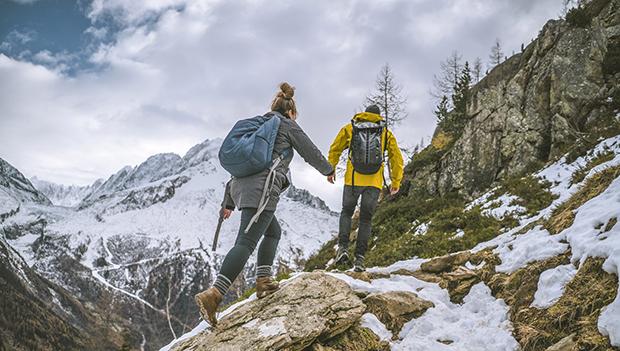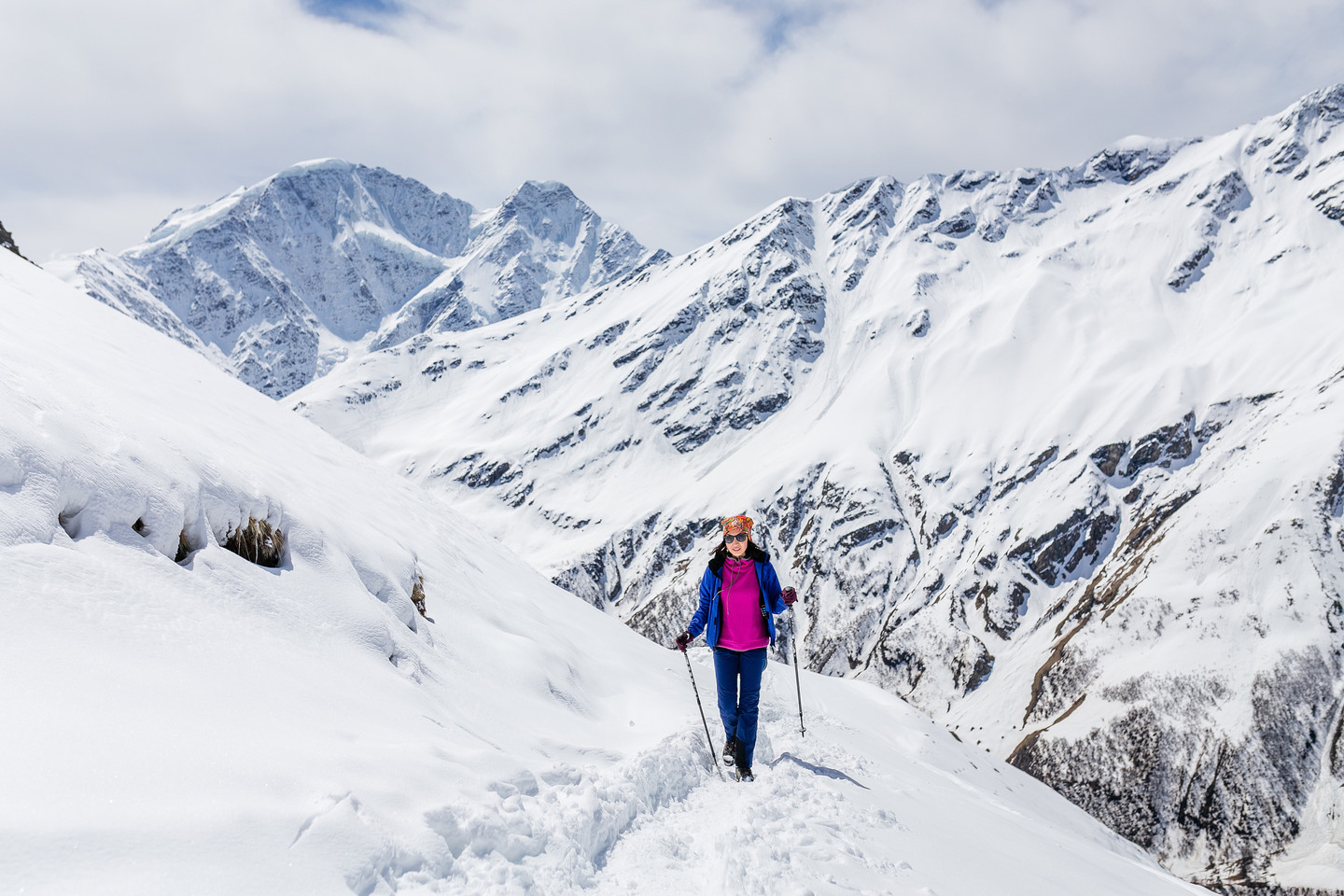Backpacking in the Alps during winter offers a unique adventure. It’s a chance to experience breathtaking snow-covered landscapes.
Winter in the Alps provides an unparalleled beauty. From snow-blanketed trails to cozy mountain huts, every aspect is magical. The crisp mountain air invigorates the senses, while the serene environment calms the mind. Whether you’re a seasoned backpacker or a curious beginner, the Alps in winter promise an unforgettable journey.
Prepare to embrace the cold, and you’ll be rewarded with stunning views and memorable experiences. This guide will help you navigate the essentials for a successful winter backpacking trip in the Alps. Ready to explore the snowy wonders of the Alpine region? Let’s dive in and discover the allure of winter backpacking in the Alps.
Contents
Essential Gear
Backpacking in the Alps during winter can be an incredible adventure. To make the most of this experience, you need to have the right gear. Proper equipment ensures safety and comfort in the harsh winter conditions. Below, we break down the essential gear you need for clothing, footwear, and backpacking equipment.
Clothing And Footwear
Layering is key to staying warm in the Alps. Start with a moisture-wicking base layer to keep sweat off your skin. Choose a thermal mid-layer for insulation. Finish with a waterproof and windproof outer layer.
For footwear, select insulated, waterproof boots. They should provide good ankle support and traction on icy paths. Wool or synthetic socks help keep your feet dry and warm.
Don’t forget accessories. A warm hat, gloves, and a neck gaiter are vital. Sunglasses or goggles protect your eyes from the snow’s glare.
Backpacking Equipment
A durable, weather-resistant backpack is essential. It should have enough space for your gear and be comfortable to carry. Look for one with multiple compartments to keep your items organized.
Bring a high-quality sleeping bag rated for low temperatures. A sleeping pad adds insulation and comfort. A compact stove and lightweight cookware are necessary for preparing hot meals and drinks.
Navigation tools like a map, compass, and GPS ensure you stay on track. Carry a first aid kit and a multi-tool for emergencies. Trekking poles help with balance on uneven terrain.
Finally, pack extra batteries and a headlamp for visibility in the dark. Always have an emergency shelter, such as a bivy sack or tarp. This can be a lifesaver in unexpected situations.
Safety Tips
Winter backpacking in the Alps is a thrilling adventure. The snow-covered peaks and serene landscapes are breathtaking. But safety should always be your top priority. Here are some essential safety tips to ensure a safe and enjoyable trip.
Avalanche Awareness
Avalanches are a serious risk in the Alps during winter. Always check the avalanche forecast before setting out. Keep an eye on weather changes. Sudden temperature shifts can trigger avalanches. Learn to recognize avalanche-prone areas. Steep slopes and heavy snowfall increase the risk. Carry an avalanche transceiver, probe, and shovel. These tools are essential for rescue operations. Practice using them before your trip. It can save lives.
Snowy trails can be hard to navigate. Always carry a map and compass. GPS devices are also helpful. But don’t rely solely on technology. Batteries can die in cold weather. Learn how to read topographic maps. They show elevation changes and trail paths. Stay on marked trails as much as possible. Unmarked paths can be dangerous. If you lose the trail, stop and reassess. Don’t wander aimlessly. You can easily get lost in the snow.
Top Winter Trails
Exploring the Alps in winter offers breathtaking views and thrilling adventures. The snow-covered trails provide an unparalleled experience. Whether you’re a beginner or an expert, there’s a trail for you. Let’s dive into the top winter trails in the Alps.
Best Routes For Beginners
Beginners can enjoy trails with gentle slopes and scenic vistas. The Sertig Valley trail in Switzerland is perfect. It offers easy terrain and stunning views. Another great option is the Seefeld Plateau in Austria. This trail is wide and well-marked, ideal for first-time backpackers.
The Dolomites in Italy also have beginner-friendly routes. The Alpe di Siusi trail is very popular. It boasts beautiful landscapes and manageable paths. These routes ensure a safe and enjoyable experience for newcomers.
Challenging Trails For Experts
Expert backpackers seek more challenging trails. The Haute Route is a top choice. This trail connects Chamonix in France to Zermatt in Switzerland. It demands high endurance and advanced skills.
Another tough trail is the Stubai High Trail in Austria. It offers steep climbs and rugged terrain. The Berner Oberland Traverse in Switzerland is also for seasoned adventurers. It features icy paths and high altitudes. These trails provide an exhilarating challenge for expert backpackers.
Accommodation Options
Embarking on a winter backpacking adventure in the Alps is an unforgettable experience. Choosing the right accommodation is crucial for a comfortable and safe journey. This section will guide you through the best accommodation options available, ensuring you make the most of your alpine adventure.
Mountain Huts And Cabins
Mountain huts and cabins offer a warm and cozy retreat from the cold. They are perfect for backpackers looking for a bit of comfort.
| Accommodation | Features | Availability |
|---|---|---|
| Mountain Huts | Basic amenities, communal areas | High, especially in popular routes |
| Cabins | Private rooms, kitchen facilities | Moderate, book in advance |
Mountain huts are usually run by alpine clubs and offer basic amenities. They often have shared sleeping areas and communal dining.
Cabins, on the other hand, provide more privacy and facilities like kitchens. These are ideal for small groups or families.
Winter Camping Tips
Winter camping in the Alps can be a thrilling experience. But it requires proper preparation. Here are some essential tips:
- Choose the right tent: Ensure it is four-season rated.
- Pack warm clothing: Layering is key to staying warm.
- Insulate your sleeping area: Use a high-R value sleeping pad.
- Stay dry: Wet clothes can lead to hypothermia.
- Bring a reliable stove: Warm meals and drinks are crucial.
- Know your limits: Always put safety first.
These tips will help you stay warm and safe during your winter camping adventure in the Alps.
Local Wildlife
Backpacking the Alps during winter offers a unique experience. The snow-covered peaks and serene landscapes are home to diverse wildlife. Observing these animals in their natural habitat can be a memorable part of your journey. Here’s what you need to know about the local wildlife.
Animals To Watch For
The Alps are home to many fascinating animals. During winter, some animals are easier to spot due to the snow.
- Ibex: These mountain goats are known for their impressive horns. They can often be seen on rocky slopes.
- Chamois: A smaller relative of the ibex, chamois are agile and can be spotted in higher altitudes.
- Red Deer: These large deer are often seen in forested areas. Their reddish-brown coat stands out against the snow.
- Alpine Marmot: Though they hibernate in winter, you might see their burrows or hear them whistling in spring.
- Golden Eagle: These majestic birds of prey can be seen soaring high above the mountains.
Respecting Nature
While observing wildlife, it’s crucial to respect their habitat. Here are some tips:
- Maintain a safe distance. Do not approach or feed animals.
- Stay on marked trails to avoid disturbing natural habitats.
- Keep noise levels down. Loud sounds can scare wildlife.
- Dispose of waste properly. Litter can harm animals and their environment.
- Use binoculars or a camera with a zoom lens for better viewing without intrusion.
By following these guidelines, you help preserve the delicate balance of the alpine ecosystem.
Cultural Experiences
Backpacking in the Alps during winter offers more than just stunning landscapes and thrilling adventures. It provides a unique opportunity to immerse yourself in the rich culture of the region. From traditional villages to vibrant local festivals, the Alps have a lot to offer.
Traditional Alpine Villages
Traditional Alpine villages are charming and full of history. These villages often feature wooden chalets, narrow streets, and stunning mountain views. Walking through these villages feels like stepping back in time.
Each village has its own unique character. You might find local artisans crafting goods, or small family-owned restaurants serving hearty Alpine meals. Be sure to try the local cheese and wine, both of which are specialties of the region.
Here are some must-visit traditional villages:
- Zermatt, Switzerland
- Chamonix, France
- St. Anton, Austria
Local Festivals And Events
Winter in the Alps is a time for local festivals and events. These celebrations are a great way to experience the local culture and traditions. Each village and town hosts its own unique events, from Christmas markets to winter sports competitions.
Some popular festivals and events include:
| Event | Location | Date |
|---|---|---|
| Chamonix Christmas Market | Chamonix, France | December |
| Hahnenkamm Races | Kitzbühel, Austria | January |
| Engadine Ski Marathon | St. Moritz, Switzerland | March |
These events offer a glimpse into the local way of life. You can enjoy traditional music, local food, and winter sports activities.
Photography Tips
Backpacking in the Alps during winter offers a magical experience for photographers. The snowy landscapes provide endless opportunities for stunning shots. To make the most of your winter adventure, consider these essential photography tips.
Capturing Snowy Landscapes
Snowy landscapes can create breathtaking photos. To capture the beauty, follow these tips:
- Use a polarizing filter: This reduces glare from the snow, making the colors more vibrant.
- Adjust your exposure: Snow can trick your camera’s light meter. Increase the exposure by 1-2 stops to avoid underexposed images.
- Look for contrast: Include dark objects like trees or rocks to add depth and interest.
- Capture during golden hours: Early morning or late afternoon light enhances the snow’s texture and color.
- Experiment with angles: Try different perspectives. Shoot from low angles to make the snow appear more dramatic.
Protecting Your Gear
Winter conditions can be harsh on your photography gear. Here are some tips to keep it safe:
| Tip | Details |
|---|---|
| Use weather-sealed bags: | Keep your camera and lenses in weather-sealed bags to protect against moisture. |
| Keep batteries warm: | Cold temperatures drain batteries quickly. Store them in an inner pocket close to your body heat. |
| Use lens hoods: | Lens hoods help prevent snowflakes from landing on the lens. |
| Avoid quick temperature changes: | Transitioning from cold to warm environments can cause condensation. Let your gear acclimate gradually. |
| Bring a microfiber cloth: | Use it to wipe off snowflakes and moisture from your gear. |

Credit: www.reserveamerica.com
Credit: www.snowtrex.co.uk
Frequently Asked Questions
What Gear Is Essential For Winter Backpacking In The Alps?
Warm clothing, sturdy boots, thermal socks, insulated sleeping bag, map, compass, and high-calorie food are crucial.
How Do I Stay Warm While Backpacking In The Alps?
Layer your clothing, stay dry, use hand warmers, and eat high-energy foods. Always carry extra layers.
Is It Safe To Backpack In The Alps During Winter?
Yes, with proper gear, planning, and awareness of weather conditions. Always inform someone of your plans.
Conclusion
Backpacking the Alps in winter offers unforgettable adventures. The stunning scenery, snowy trails, and cozy mountain huts create lasting memories. Embrace the cold, and enjoy the beauty of nature. Prepare well for the trip and respect the environment. Each step reveals new wonders.
Don’t miss this unique experience. Your winter backpacking journey in the Alps awaits. Safe travels and happy exploring!

